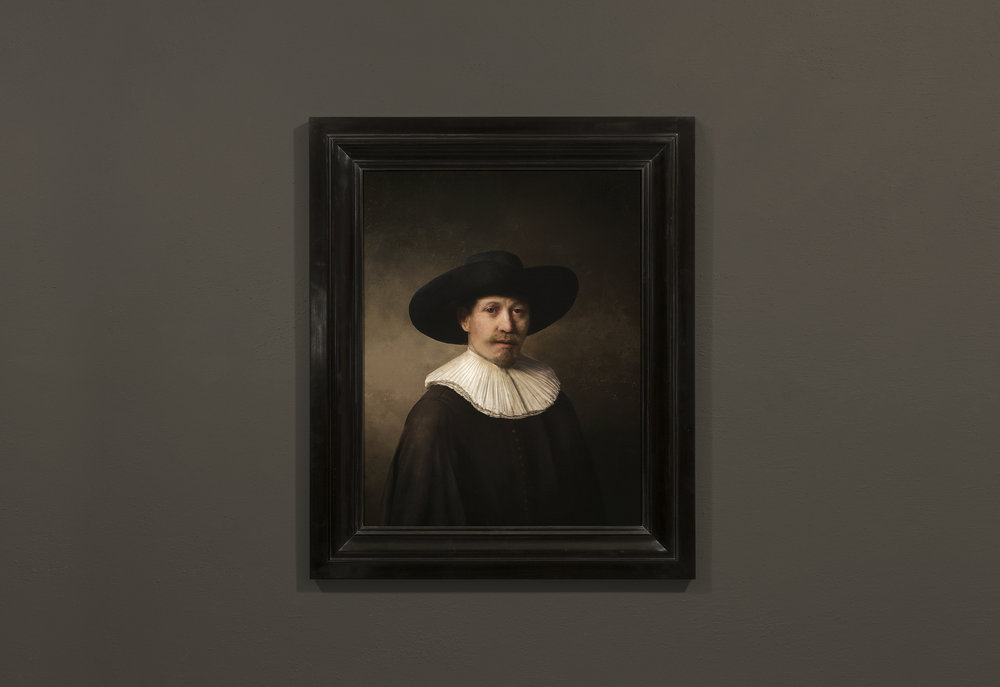Why resurrect something that’s done and dusted? Debate continues over our increasing potential to bring back extinct animal species, while good taste acts as a constant and nagging critic of new books written as prequels or sequels to much-loved historic novels. But what about the resurrection of a famous artist, whose paintings are well known and recognisable – someone as key to the canon of western art history as the hugely important and much-loved Rembrandt?

In the ‘new’ Rembrandt that was unveiled last week, a man in a floppy ruff and a black hat stares out of the canvas with a familiar look. When the project team that created the image were thinking about what sort of Rembrandt portrait to produce, it was decided that a typical one would comprise a portrayal of a white man in his 30s, wearing dark clothes and a hat, facing the viewer’s right. The end result, made using impressive computer technology (algorithms for Rembrandt portrait facial recognition determined the details of the composition) and 3D printing, is a novel physical portrait. But what of it? This is shorthand Rembrandt, created out of information gleaned by computers from many actual Rembrandt portraits – not a psychological representation, but rather a scientific one. The cleverness is that it captures a generic look of an early Rembrandt, good enough to likely fool some visitors if it were displayed amongst Dutch portraits in a gloomy gallery. But the image fails to capture a human soul or represent nuanced emotions in a painterly outer visage – something that Rembrandt did spectacularly well throughout his long career, not least when he was portraying himself. Likewise the picture cannot address aspects of a real portrait’s physicality, such as its condition or the quality of the painting within that artist’s oeuvre.
The ‘Next Rembrandt’, a 3D printed painting made using data of Rembrandt’s body of work, has been unveiled in Amsterdam.

So why bother? This is testing what computers can do with image information, and the techno-connoisseurship involved is fun and interesting. It’s good that the artist is being looked at by a new audience in order to work out what it is that makes a Rembrandt portrait. Ultimately the portrait produced doesn’t quite work – but the proclamation of it being ‘the next Rembrandt’ is easy press-release hype that helps publicise a positive story. Painted portraits are made by portrait painters, not computers: but if it’s an enjoyable exercise of well-intended imitation, that makes us think about Rembrandt and work out his technique, then why not undertake it? It does no harm to analyse a great painter’s work in a new way. This is very clever software and not great art. And it’s not pretending to be the latter.



